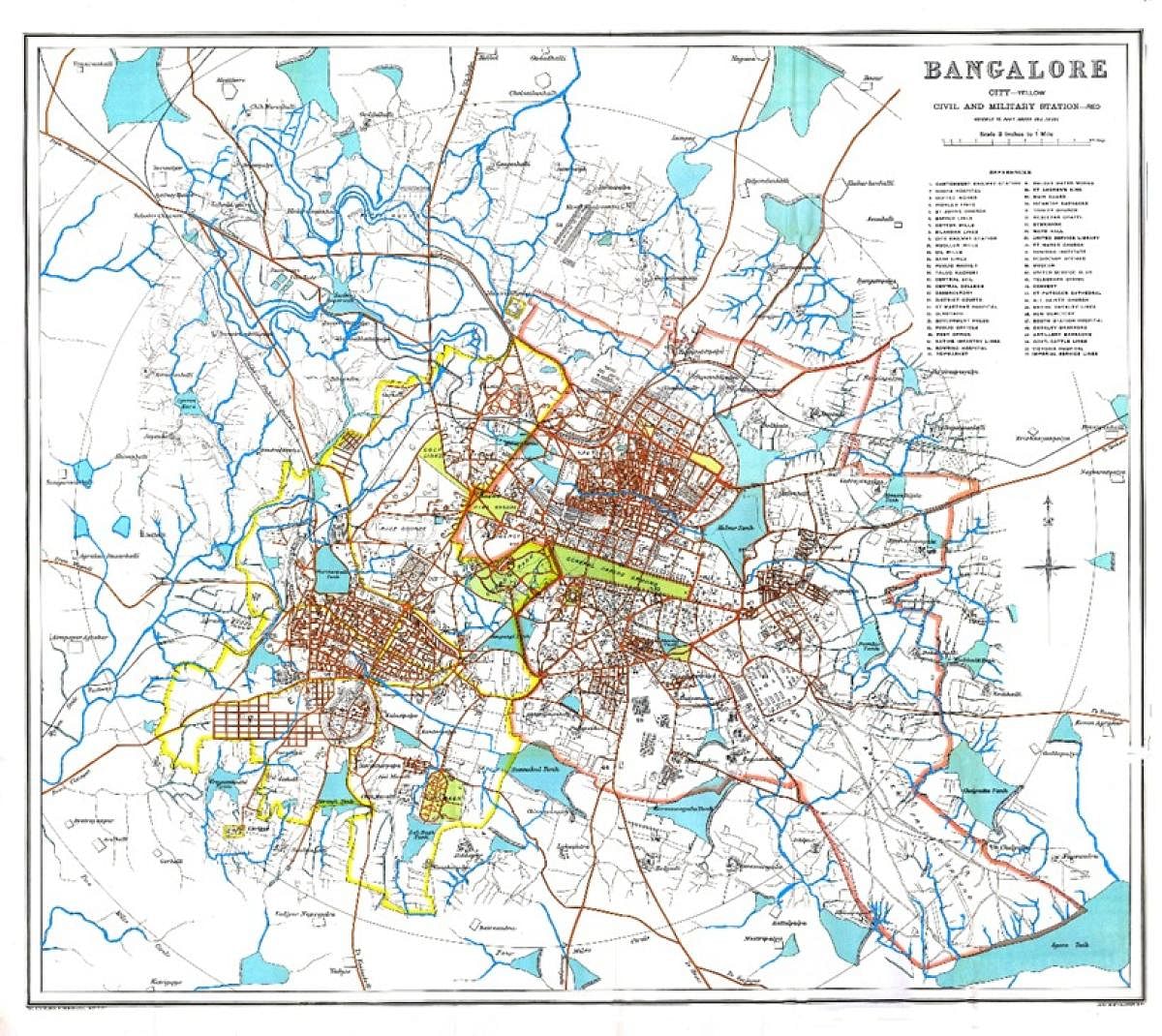
Bengaluru is flooded. Again.
Images of residential colonies inundated with rain water, slums being washed away, and rescue boats plying to ferry residents in low-lying areas have painted an unflattering image of the city. Social media is flooded with posts calling Bengaluru “Venice” — referring to the stagnation of water outside people’s homes. While the events of the last few days have been stark, flooding has become commonplace in our city. Just a few months ago, a similar situation was witnessed during the summer showers.
Though this article runs the risk of being thrown into the ‘Bengaluru environmental woes op-eds’ — a fairly large pile— it is perhaps needed to remind us of our city’s ecological history.
Patrick Geddes, a renowned town planner during the British period opined that an Indian city is defined by its relationship with water. This statement holds most true for Bengaluru. Its placement exposes it to two monsoon branches that bring rainfall from June to September (south-west monsoon) and from October to November (north-east monsoon). The city also receives its famous summer showers from depressions occurring in the Bay of Bengal.
Topographically, Bengaluru is littered with contrasts of flat lands (maidans) and ridges. The eastern half of the city is fairly even, while the western half is undulating.
Early settlers could not afford to allow water to flow away, especially as Bengaluru had no perennial rivers running through it. They needed to store it for consumption beyond the monsoon and hence began constructing an intricate network of tanks to harvest rainfall.
The undulations provided sites with natural depressions that could be exploited to store water. Although we popularly call the water bodies within the city “lakes”, they actually are all, without exception, man-made tanks.
Tanks were engineered entities constructed to harvest rainfall. The legacy of this system dates as far back as 1500 BC. Inscriptions and oral histories tell us how they were engineered. Tanks were not placed ad hoc wherever one willed. Rather, they were carefully situated in accordance with the topography of the region.
Further, water was meant to cascade from one tank to the next via rajakaluves (large canals) and smaller waste weirs that connected adjacent tanks. When one tank became full, water flowed through these canals into the next tank lower in the series.
As tanks connected with each other through the kaluves, they formed a network, with each network having between two and 200 tanks, as seen in the map.
Lewis Rice, a historian within the British government who prepared the seminal Mysore Gazetteer in 1897, has remarked: “It may be conceived how vast a time would be expended in creating a single series as we now find of several hundred, and in some cases over a thousand reservoirs, linked together in this fashion, and forming such continued chains of works that not a single drop of water falling on the catchment is wasted.”
There was a clear cognisance of catchments—areas around the tank that would “catch” rainwater and allow its drainage into the tank—in the vicinity of a tank. These catchment areas functioned as buffer zones for tanks to expand and contract depending on the season, and also facilitated the infiltration of water into the subsurface.
As tanks were built to support an agrarian society, their utility started to diminish with transformations in social and economic spheres. By the late 19th century, Bengaluru came up as a promising hub for the industrial and service sectors. To pave the way for our growing economy, massive construction was done over areas that belonged to tanks and its kaluves.
What we are seeing in Bengaluru today is a mixture of events happening at two different levels.
On the one hand, we have climate change that is increasing rainfall intensity. On the other, we have a city infrastructure pattern that has completely forgotten the ecological history of Bengaluru. Of these two, the latter is very much under our control. We are meddling with thousands of years of
civilisations that have morphed our landscape to provide a deep ecological basis for the city we call Bengaluru today. It is hubris to think that
the city’s ecological history
can be rewritten in “concrete”.
Unless there is a shift in our urban planning cognition—that one cannot abstract the environment from planning—there will be no change in our circumstance. In a recent prime time TV debate discussing the floods in the city, the anchor exclaimed that Bengaluru was having a heart attack!
If the city is indeed having a heart attack, it is due to the blockages of its arteries and veins — the weirs and canals that allow water to flow from one lake to the other.
While urban planning in the future will be dominated by technological advancements in artificial intelligence, machine learning, and so on, we must also dust the cobwebs off our old maps and learn from those who went before us.
(The writer works in the area of climate adaptation and risk analysis at the Centre for Study of Science, Technology and Policy (CSTEP).)